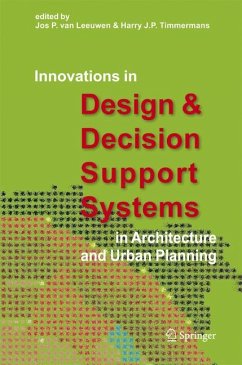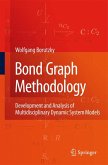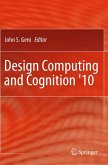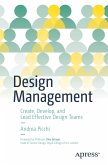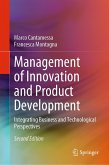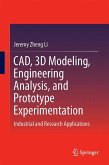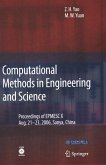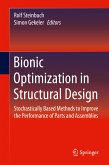Innovations in Design & Decision Support Systems in Architecture and Urban Planning (eBook, PDF)
Redaktion: Leeuwen, van; Timmermans, Harry J. P.
233,95 €
233,95 €
inkl. MwSt.
Sofort per Download lieferbar

117 °P sammeln
233,95 €
Als Download kaufen

233,95 €
inkl. MwSt.
Sofort per Download lieferbar

117 °P sammeln
Jetzt verschenken
Alle Infos zum eBook verschenken
233,95 €
inkl. MwSt.
Sofort per Download lieferbar
Alle Infos zum eBook verschenken

117 °P sammeln
Innovations in Design & Decision Support Systems in Architecture and Urban Planning (eBook, PDF)
Redaktion: Leeuwen, van; Timmermans, Harry J. P.
- Format: PDF
- Merkliste
- Auf die Merkliste
- Bewerten Bewerten
- Teilen
- Produkt teilen
- Produkterinnerung
- Produkterinnerung

Bitte loggen Sie sich zunächst in Ihr Kundenkonto ein oder registrieren Sie sich bei
bücher.de, um das eBook-Abo tolino select nutzen zu können.
Hier können Sie sich einloggen
Hier können Sie sich einloggen
Sie sind bereits eingeloggt. Klicken Sie auf 2. tolino select Abo, um fortzufahren.

Bitte loggen Sie sich zunächst in Ihr Kundenkonto ein oder registrieren Sie sich bei bücher.de, um das eBook-Abo tolino select nutzen zu können.
Traditionally, the DDSS conferences aim to be a platform for both starting and experienced researchers who focus on the development and application of computer support in urban planning and architectural design. This volume contains 31 peer reviewed papers from this year's conference. This book will bring researchers together and is a valuable resource for their continuous joint effort to improve the design and planning of our environment.
- Geräte: PC
- ohne Kopierschutz
- eBook Hilfe
- Größe: 39.54MB
Andere Kunden interessierten sich auch für
![Bond Graph Methodology (eBook, PDF) Bond Graph Methodology (eBook, PDF)]() Wolfgang BorutzkyBond Graph Methodology (eBook, PDF)161,95 €
Wolfgang BorutzkyBond Graph Methodology (eBook, PDF)161,95 €![Design Computing and Cognition '10 (eBook, PDF) Design Computing and Cognition '10 (eBook, PDF)]() Design Computing and Cognition '10 (eBook, PDF)233,95 €
Design Computing and Cognition '10 (eBook, PDF)233,95 €![Design Management (eBook, PDF) Design Management (eBook, PDF)]() Andrea PicchiDesign Management (eBook, PDF)35,95 €
Andrea PicchiDesign Management (eBook, PDF)35,95 €- -44%11
![Management of Innovation and Product Development (eBook, PDF) Management of Innovation and Product Development (eBook, PDF)]() Marco CantamessaManagement of Innovation and Product Development (eBook, PDF)65,95 €
Marco CantamessaManagement of Innovation and Product Development (eBook, PDF)65,95 € ![CAD, 3D Modeling, Engineering Analysis, and Prototype Experimentation (eBook, PDF) CAD, 3D Modeling, Engineering Analysis, and Prototype Experimentation (eBook, PDF)]() Jeremy Zheng LiCAD, 3D Modeling, Engineering Analysis, and Prototype Experimentation (eBook, PDF)69,95 €
Jeremy Zheng LiCAD, 3D Modeling, Engineering Analysis, and Prototype Experimentation (eBook, PDF)69,95 €![Computational Methods in Engineering & Science (eBook, PDF) Computational Methods in Engineering & Science (eBook, PDF)]() Zhenhan YaoComputational Methods in Engineering & Science (eBook, PDF)217,95 €
Zhenhan YaoComputational Methods in Engineering & Science (eBook, PDF)217,95 €![Bionic Optimization in Structural Design (eBook, PDF) Bionic Optimization in Structural Design (eBook, PDF)]() Bionic Optimization in Structural Design (eBook, PDF)65,95 €
Bionic Optimization in Structural Design (eBook, PDF)65,95 €-
-
-
Traditionally, the DDSS conferences aim to be a platform for both starting and experienced researchers who focus on the development and application of computer support in urban planning and architectural design. This volume contains 31 peer reviewed papers from this year's conference. This book will bring researchers together and is a valuable resource for their continuous joint effort to improve the design and planning of our environment.
Dieser Download kann aus rechtlichen Gründen nur mit Rechnungsadresse in A, B, BG, CY, CZ, D, DK, EW, E, FIN, F, GR, HR, H, IRL, I, LT, L, LR, M, NL, PL, P, R, S, SLO, SK ausgeliefert werden.
Produktdetails
- Produktdetails
- Verlag: Springer Netherlands
- Seitenzahl: 502
- Erscheinungstermin: 21. September 2006
- Englisch
- ISBN-13: 9781402050602
- Artikelnr.: 37356042
- Verlag: Springer Netherlands
- Seitenzahl: 502
- Erscheinungstermin: 21. September 2006
- Englisch
- ISBN-13: 9781402050602
- Artikelnr.: 37356042
- Herstellerkennzeichnung Die Herstellerinformationen sind derzeit nicht verfügbar.
Jos P. Leeuwen, van, Eindhoven University of Technology, The Netherlands / Harry J.P. Timmermans, Eindhoven University of Technology, The Netherlands
Land Use Simulation and Visualisation.- Can Decision Making Processes Benefit from a User Friendly Land Use and Transport Interaction Model?.- Development of a Hierarchical Approach to Assess the Impacts of Transport Policies.- Development of a Support System for Community-Based Disaster Mitigation Planning Integrated with a Fire Spread Simulation Model Using CA.- Transition Rule Elicitation Methods for Urban Cellular Automata Models.- A Method for Estimating Land Use Transition Probability Using Raster Data.- Linking Land Use Modelling and 3D Visualisation.- Multi-Agent Models for Movement Simulation.- Crowd Modeling and Simulation.- Exploring Heuristics Underlying Pedestrian Shopping Decision Processes.- Scale A street case library for environmental design with agent interfaces.- Approach to Design Behavioural Models for Traffic Network Users.- Shape Morphing of Intersection Layouts Using Curb Side Oriented Driver Simulation.- Multi-Agent Models for Urban Development.- Gentrification Waves in the Inner-City of Milan.- Multi-Agent Model to Multi-Process Transformation.- Research on New Residential Areas Using GIS.- A Comparison Study of the Allocation Problem of Undesirable Facilities Based on Residential Awarenes.- Decision-Making on Olympic Urban Development.- Usage of Planning Support Systems.- Managing and Deploying Design Knowledge.- Sieving Pebbles and Growing Profiles.- Concept Formation in a Design Optimization Tool.- A Framework for Situated Design Optimization.- Learning from Main Streets.- Culturally Accepted Green Architecture Toolbox.- Urban Decision-Making.- An Urban Decision Room Based on Mathematical Optimisation.- Forms of Participation in Urban Redevelopment Projects.- The Neighbourhood Wizard.- Design Interactivity and Design Automation.- A Proposalfor Morphological Operators to Assist Architectural Design.- Generative Design in an Evolutionary Procedure.- Interactive Rule-Based Design.- Automatic Semantic Comparison of STEP Product Models.- Virtual Environments and Augmented Reality.- Design Tools for Pervasive Computing in Urban Environments.- 1:1 Spatially Augmented Reality Design Environment.
Land Use Simulation and Visualisation.- Can Decision Making Processes Benefit from a User Friendly Land Use and Transport Interaction Model?.- Development of a Hierarchical Approach to Assess the Impacts of Transport Policies.- Development of a Support System for Community-Based Disaster Mitigation Planning Integrated with a Fire Spread Simulation Model Using CA.- Transition Rule Elicitation Methods for Urban Cellular Automata Models.- A Method for Estimating Land Use Transition Probability Using Raster Data.- Linking Land Use Modelling and 3D Visualisation.- Multi-Agent Models for Movement Simulation.- Crowd Modeling and Simulation.- Exploring Heuristics Underlying Pedestrian Shopping Decision Processes.- Scale A street case library for environmental design with agent interfaces.- Approach to Design Behavioural Models for Traffic Network Users.- Shape Morphing of Intersection Layouts Using Curb Side Oriented Driver Simulation.- Multi-Agent Models for Urban Development.- Gentrification Waves in the Inner-City of Milan.- Multi-Agent Model to Multi-Process Transformation.- Research on New Residential Areas Using GIS.- A Comparison Study of the Allocation Problem of Undesirable Facilities Based on Residential Awarenes.- Decision-Making on Olympic Urban Development.- Usage of Planning Support Systems.- Managing and Deploying Design Knowledge.- Sieving Pebbles and Growing Profiles.- Concept Formation in a Design Optimization Tool.- A Framework for Situated Design Optimization.- Learning from Main Streets.- Culturally Accepted Green Architecture Toolbox.- Urban Decision-Making.- An Urban Decision Room Based on Mathematical Optimisation.- Forms of Participation in Urban Redevelopment Projects.- The Neighbourhood Wizard.- Design Interactivity and Design Automation.- A Proposalfor Morphological Operators to Assist Architectural Design.- Generative Design in an Evolutionary Procedure.- Interactive Rule-Based Design.- Automatic Semantic Comparison of STEP Product Models.- Virtual Environments and Augmented Reality.- Design Tools for Pervasive Computing in Urban Environments.- 1:1 Spatially Augmented Reality Design Environment.
